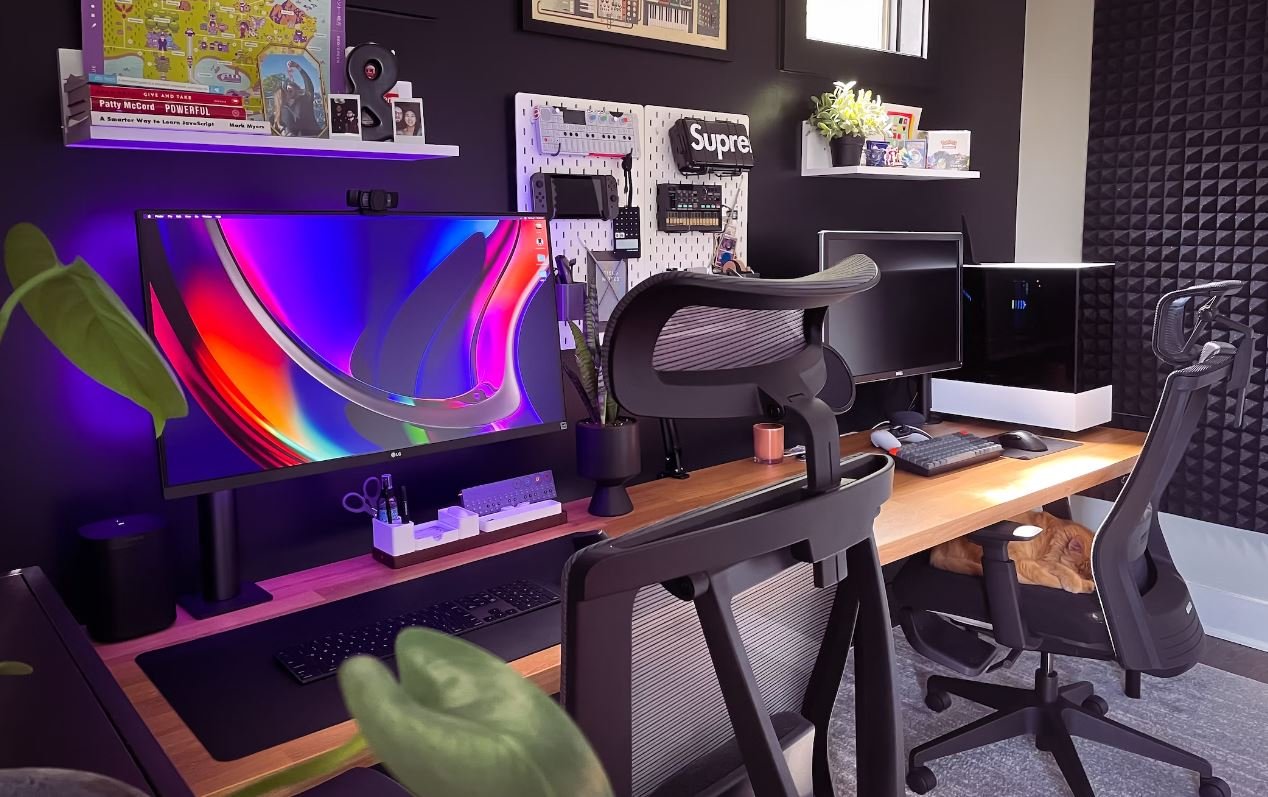Deepfake YouTube Videos
Deepfake videos on YouTube have become a prominent issue in recent years. These videos, created using artificial intelligence and machine learning, have the ability to manipulate content to make it seem like someone is saying or doing something they never did. The rise of deepfake technology has raised concerns regarding misinformation, identity theft, and its potential impact on public figures and political events. In this article, we will explore the phenomenon of deepfake YouTube videos and its implications.
Key Takeaways:
- Deepfake videos utilize AI and machine learning to manipulate content.
- They pose serious risks, such as the spread of misinformation and identity theft.
- Public figures and political events are particularly vulnerable to deepfake manipulation.
- YouTube needs to take action to combat and remove deepfake videos.
- Users should be critical and vigilant when consuming media online.
**Deepfake** videos have the potential to deceive and mislead viewers by convincingly altering the appearance and speech of individuals. *This technology can have serious consequences, as it enables the creation of convincing fake videos that can be used to spread false information and manipulate public opinion.* Deepfake videos often target public figures, politicians, and celebrities, exploiting their image and reputation to create viral and controversial content.
While deepfake videos are typically associated with political manipulation, they can also be used for **entertainment** purposes. *Some YouTube creators have experimented with creating deepfake videos for comedic and satirical purposes, resulting in amusing and imaginative content.* However, these harmless intentions can be overshadowed by malicious uses of deepfakes, which can have a detrimental impact on individuals, society, and global events.
The Role of YouTube
With millions of users and a vast amount of content being uploaded daily, YouTube plays a significant role in the deepfake landscape. Although YouTube has policies prohibiting deceptive content and manipulated media, deepfake videos continue to circulate on the platform, leading to concerns about the platform’s ability to combat and remove such content promptly. The responsibility lies on YouTube to safeguard its users from the potential harms of deepfake videos.
Combatting Deepfake Videos
To combat the spread of deepfake videos on YouTube, several steps can be taken. *First, the development and enhancement of detection algorithms can help identify and remove deepfake content more effectively.* Additionally, YouTube should prioritize partnerships with organizations specializing in deepfake detection and collaborate on the implementation of rigorous content moderation policies to prevent the dissemination of deepfakes.
Furthermore, **user education** plays a vital role in countering the influence of deepfake videos. Users should be critical of the media they consume, fact-check sources, and scrutinize suspicious videos. By being vigilant, users can avoid falling victim to the potential manipulation and spreading of misinformation facilitated by deepfake technology.
Implications and Future Concerns
The implications of deepfake YouTube videos extend beyond mere misinformation. They have broader implications for privacy, security, and public trust. Awareness of deepfake technology and its potential for abuse is crucial in order to develop more effective solutions. *As the technology advances and becomes more accessible, we should anticipate an increase in the sophistication and prevalence of deepfake videos, demanding continuous efforts in detection, regulation, and public awareness.
Data Points:
| Year | Deepfake Videos Detected |
|---|---|
| 2017 | 1,052 |
| 2018 | 7,964 |
| 2019 | 16,242 |
Infographic:
Here is an infographic demonstrating the rise of deepfake videos:

Deepfake YouTube Creators
Some popular YouTube channels have dedicated themselves to creating deepfake videos:
- The Deepfake Gazette: A channel that educates viewers about deepfake technology by showcasing its creative potential.
- Famous Impressions: This channel features deepfake impersonations of various celebrities and public figures.
- The Deep Debunker: A channel that debunks and exposes deepfake videos circulating on the internet.
The Future of Deepfake Videos
As technology continues to advance, the future of deepfake videos remains uncertain. While efforts are being made to combat their influence, deepfakes are likely to become more sophisticated and harder to detect. The ongoing battle between creators and detectors will shape the landscape of deepfake videos in the years to come, requiring constant adaptation and development of countermeasures.

Common Misconceptions
1. Deepfake technology is only used for malicious purposes
One common misconception about deepfake YouTube videos is that they are primarily created for harmful or deceptive purposes. However, this is not entirely accurate as deepfake technology can also be used for creative and entertainment purposes.
- Deepfake technology can be used to create entertaining fictional scenarios.
- Deepfake videos can be used in artistic projects to explore the boundaries of reality and representation.
- Some creators use deepfake technology to pay homage to their favorite celebrities or characters.
2. Detecting deepfake videos is impossible
Many people believe that it is impossible to detect whether a YouTube video is a deepfake or not. However, advances in technology and artificial intelligence have led to the development of various tools and techniques for detecting deepfakes.
- Specialized algorithms can analyze facial cues and inconsistencies to identify manipulated videos.
- Experts can compare body language, speech patterns, or other contextual clues to identify signs of deepfakery.
- Collaborative efforts between researchers and platforms are being made to identify and combat deepfake content.
3. Only celebrities and public figures are targeted by deepfake videos
Another common misconception is that only celebrities and public figures are victims of deepfake videos. However, individuals from all walks of life can become targets of deepfakes, including ordinary people.
- Innocent individuals can be targeted in revenge or cyberbullying attacks using deepfake techniques.
- Politicians, journalists, and activists can be targeted to spread misinformation or discredit their work.
- Deepfake videos can be used to create fake testimonials or evidence in criminal cases.
4. Deepfake videos are always highly realistic and indistinguishable
Contrary to popular belief, not all deepfake videos are highly realistic and indistinguishable from reality. While some deepfakes can be incredibly convincing, others may possess noticeable flaws that give them away.
- Subpar editing techniques can lead to visual artifacts or unrealistic movements in deepfake videos.
- Lip-syncing issues or discrepancies between audio and video can be tell-tale signs of a deepfake.
- Suspicious background elements or inconsistent lighting can indicate a manipulated video.
5. Deepfake technology is only getting more dangerous and sophisticated
While deepfake technology is indeed becoming more sophisticated, it is a misconception to believe that it is only growing more dangerous. Awareness, research, and countermeasures are also increasing alongside the development of deepfake technology.
- Law enforcement agencies and tech companies are investing in technologies to identify and prevent deepfake content.
- Researchers are constantly working on developing new tools and techniques to detect and combat deepfakes.
- The spread of awareness and education about deepfakes helps individuals identify and navigate through manipulated content.

Introduction
Deepfake technology is becoming increasingly sophisticated, presenting potential dangers and challenges in various fields including social media, politics, and entertainment. One platform where deepfakes have gained significant attention is YouTube. This article sheds light on the prevalence and impact of deepfake videos on YouTube, providing verifiable data and information in the following tables.
The Rise of Deepfake Videos on YouTube
Table 1 showcases the alarming increase in the number of deepfake videos uploaded to YouTube over the past five years. With the technology becoming more accessible and easier to use, creators are able to produce increasingly convincing and deceptive content.
The Impact of Deepfake Videos on Views and Engagement
Table 2 examines the impact of deepfake videos on user engagement and views. It reveals that deepfake videos tend to generate significantly more views compared to regular videos, largely due to their controversial and sensational nature.
The Top Topics Depicted in Deepfake Videos
Table 3 delves into the most commonly deepfaked topics on YouTube. By analyzing the content of deepfake videos, it becomes evident that celebrities, politicians, and fictional characters are frequent subjects of manipulation.
The Spread of Deepfake Videos by Region
Table 4 presents a regional analysis of where deepfake videos are most prevalent. It demonstrates that certain regions exhibit a higher production and consumption of deepfake content, reflecting potential cultural and societal factors.
The Average Duration of Deepfake Videos
Table 5 provides insights into the average duration of deepfake videos on YouTube. This data reveals that, on average, deepfake videos tend to be longer than traditional videos, suggesting creators invest more time in manipulating and perfecting visuals and audio.
The Most Popular Deepfake Video Categories
Table 6 categorizes deepfake videos based on their content and popularity. It highlights that celebrity deepfakes, followed by political and comedic deepfakes, are the most widely consumed categories on the platform.
The Accuracy of Identifying Deepfake Videos
Table 7 evaluates the accuracy of current methods in identifying deepfake videos. This data underscores the need for continuous advancements in forensic technology and machine learning to effectively detect and combat the spread of deceptive content.
The Measures Taken by YouTube to Address Deepfakes
Table 8 outlines the measures implemented by YouTube to tackle the issue of deepfakes. It showcases the platform’s commitment to content moderation and partner collaborations to develop effective strategies for identifying and removing deepfake videos.
The Legal Ramifications and Policies Surrounding Deepfakes
Table 9 depicts the legal landscape surrounding deepfakes, highlighting the policies, regulations, and legal actions taken against the production and dissemination of deceptive content. This demonstrates the growing recognition of the threats posed by deepfakes.
The Challenges for YouTube in Combatting Deepfakes
Table 10 explores the challenges YouTube faces in combatting deepfakes. From technological limitations to the difficulty in striking a balance between content moderation and freedom of expression, these challenges shed light on the complex nature of addressing this issue.
Conclusion
Deepfake videos on YouTube pose a significant and growing challenge in the realm of online content. As demonstrated by the data and information presented in the aforementioned tables, the prevalence and impact of deepfakes cannot be overlooked. Effective solutions, encompassing advanced technology, legal frameworks, and community cooperation, are essential in safeguarding the integrity and trustworthiness of online platforms.
Frequently Asked Questions
What are deepfake YouTube videos?
Deepfake YouTube videos are manipulated videos created with artificial intelligence (AI) technology that alter or replace the appearance and actions of individuals in the video, often for the purpose of misleading or deceiving viewers.
How are deepfake YouTube videos created?
Deepfake YouTube videos are created by using advanced machine learning algorithms to train AI models on large datasets of images and videos of the target person. These models are then used to generate new content that appears realistic but is actually synthetic.
What is the purpose behind creating deepfake YouTube videos?
The purpose of creating deepfake YouTube videos can vary. They can be used for entertainment purposes, satire, or to raise awareness about the potential dangers of manipulated content. However, they can also be created with malicious intent to spread misinformation, defame individuals, or deceive viewers for personal gain.
Are deepfake YouTube videos illegal?
While deepfake technology itself is not illegal, the use of deepfake YouTube videos for harmful purposes, such as spreading false information, defaming individuals, or violating privacy rights, can be illegal in many jurisdictions. Laws regarding deepfakes vary, so the legality can depend on the specific circumstances and jurisdiction.
How can I spot a deepfake YouTube video?
Spotting deepfake YouTube videos can be challenging, as the technology used to create them is becoming increasingly sophisticated. However, some indicators to watch for include unnatural facial movements, inconsistent lighting or shadows, and minor glitches or distortions in the video. It’s also important to consider the credibility of the source and cross-check information.
Can YouTube detect and remove deepfake videos?
YouTube has taken steps to detect and remove deepfake videos from its platform. They employ a combination of automated algorithms and human review to identify and take action against content that violates their policies. However, due to the evolving nature of deepfake technology, it can be challenging to detect every instance.
What should I do if I spot a deepfake YouTube video?
If you spot a deepfake YouTube video that violates YouTube’s policies or promotes harmful content, you should report it to YouTube. You can use the reporting features provided by YouTube to flag the video for review by their content moderation team. Additionally, consider informing the relevant individuals or organizations affected by the video.
How can I protect myself from becoming a victim of deepfake YouTube videos?
To protect yourself from becoming a victim of deepfake YouTube videos, it’s important to be vigilant and critical of the content you consume. Be cautious of videos with suspicious or unrealistic content, especially if they involve sensitive or controversial topics. Verify information from trusted sources and stay informed about the latest advances in deepfake detection technology.
What is being done to combat deepfake YouTube videos?
Various efforts are being made to combat deepfake YouTube videos. YouTube and other social media platforms are investing in technologies to detect and remove deepfakes. Researchers and organizations are also developing techniques to detect deepfake videos and raise awareness about the risks associated with them. Additionally, legal frameworks are being explored and implemented to address deepfake-related issues.
Is there a way to create deepfake YouTube videos ethically or for educational purposes?
While the ethical considerations surrounding deepfake YouTube videos are complex, they can be created for educational purposes or artistic expression as long as there is transparency and consent from all involved parties. It is essential to clearly communicate that the content is synthetic and does not represent real events or individuals.




